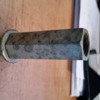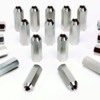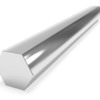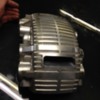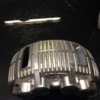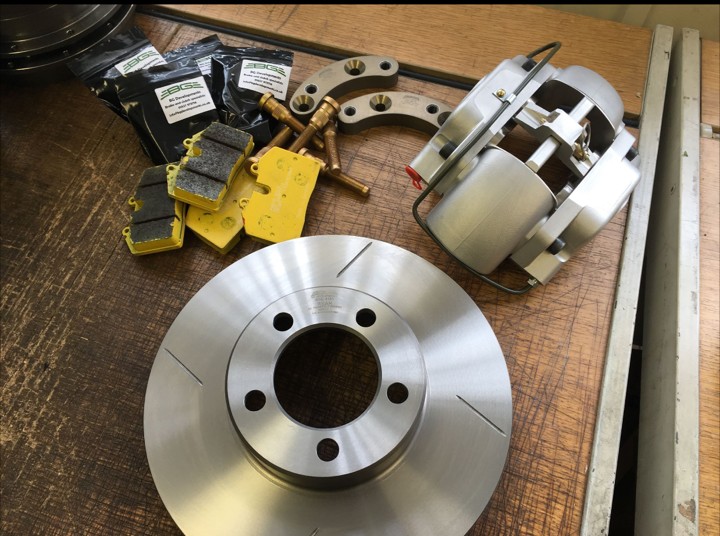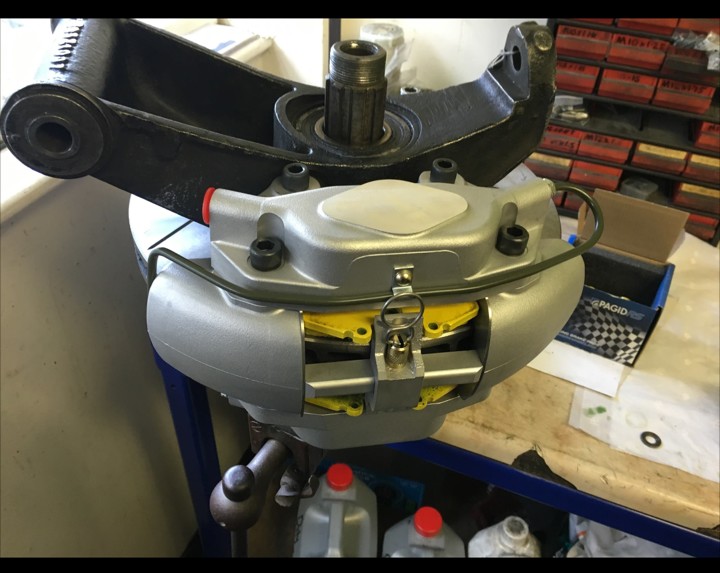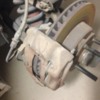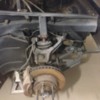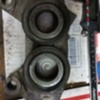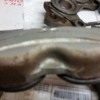@ Kid.
A while ago I asked if there were "racing" front spindles for the Gp4 cars. Your bent spindle is an example why.
So far, the answer is no, and the probability is that there never were?
The thought I had was that when "Ford racers", whether or not it was Shelby Racing, Hollman Moody, and any of the racers that went racing with the Mustang in the Trans Am series, the weakness of the original spindle under severe conditions became apparent.
Very simply, Ford itself, redesigned the spindle enlarging the diameter of the spindle only at the vertical intersection. The outer end of the spindle remained the same. The outer wheel bearing remained the same.
It really came about, not from racing but to handle the 60 series tires on the 1970 model Mustang, not the race car. Simply put, the racers took this improved street car part and substituted it for the original smaller spindle size part and basically it solved the problem.
The original spindle couldn't handle going from something like a 6.95-14 to a D60-15. That is the same size as the Pantera which at most could handle the C60 Arriva. Are you SURE you want to race on that?
People who are familiar with both the Mustang and the Pantera see the similarities between the two cars. In effect, the Pantera is a metric version of the Mustang front suspension dimensionally.
Now considering that the Gp4 cars can fit huge front racing tires, the loading on that spindle is tremendously increased.
I suppose that the simple fix then was just to replace a bent "stock" spindle with another new stock part?
This to me, just seems to be a difference in perspective between how the Europeans and the Americans go about racing? I'm not the one to criticize but thinking about that picture of the pile of bent Gp4 cars behind the Detomaso factory, I can't help but wonder how many of those wound up there because of a failed front spindle?
Apparently they weren't even worth fixing? Just take another car out of production and build another Gr4? Same weak parts. Same results in the end?
All things considered, if I was racing, my worry wouldn't be if it would fail, just when and where on the track. My experiences would say, probably at the worst possible time, in the worst possible place. Just my observation.
I do see that you realized that in order to use a spacer safely they need to be hub-centric. Anything else on this car is suicidal but not everyone is going to take that route unfortunately and not everyone is going to put longer studs in the car.
Unless you have actually experienced it (I have) you won't believe how easy those studs blow off. Kinda' like explosive bolts on the canopy of a fighter jet in an emergency bail out situation, just without the noise?
@ Goodroc.
Using stainless for any fastener "sounds" like a great idea. The problem is that stainless threaded fasteners "chafe" much to easily, cross thread and jamb.
It is so typical that when you disassemble them, pieces of the threads come with it.
I don't know if it is any kind of a great idea to use stainless lug nuts on a car under severe conditions?
Also, lug nuts for "severe duty" use, like racing, should be hardened. Although technically anyone with a Smithy 3 in 1 in the garage could make lug nuts out of hex stock, it really isn't just that simple to cut the stock down, drill them and thread them.





